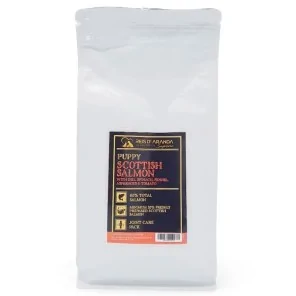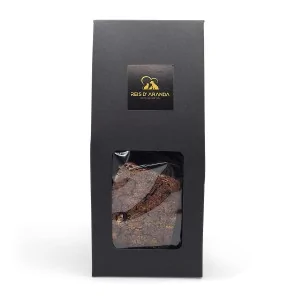Its name says it all: the Vienna blue rabbit comes from Austria. Not only is it beautiful with its shiny blue-grey...
THE POLISH PLAINS SHEEPDOG
INTRODUCTION
The Polish Sheepdog of the Plains is a lively dog that is a quick learner and enjoys training. He is a natural shepherd and watchdog. He has a very good character and is a good companion in the house, always alert. Affectionate with his loved ones, he loves to be with his owner, although at first he can be distant with strangers.
THE ORIGIN OF THE POLISH PLAINS SHEPHERD DOG
The Polish Shepherd Dog of the plains is known in many parts of the world as the Nizinny Polski Owczarek (pronounced ‘pole-ski off-chair-ick na-gin-nee’) and even in the United States by its nickname of PON. The origins of the breed probably go back to Central Asia, from one or more Tibetan breeds, such as the Tibetan terrier, which were probably introduced to Eastern Europe by Tibetan traders. Tibetan long-haired dogs were probably crossed with Hungarian shepherd dogs covered with hard coats, introduced by the Huns in the 4th century. While the large herd guarding dogs avoided large predators, the smaller Polish shepherd dogs of the plains worked with the shepherds in moving and controlling the sheep, and also kept an eye on potential intruders. Unlike the larger dogs, they did not frighten the sheep and could work all day. They worked on the plains of Poland for centuries, until the interest in purebred dogs began and breeding spread across Europe in the late 1800s and 1900s. This, combined with Poland's national pride after World War I, led to an interest in the promotion and selective breeding of the Polish Shepherd of the plains. Several left to live and work on the plains of the large estates. In 1924, the PON was shown at the dog and poultry show in Warsaw. The PON breeders were about to start a registry when Germany invaded Poland in 1939. Most of the dogs had to be abandoned, but a legend says that a Warsaw PON named Psyche was highly valued for its ability to predict falling bombs, alerting people to take refuge in shelters. Only about 150 Polish plains shepherds remained after World War II. Several breeders tried to reconstitute the breed. The first PON registered with the Polish Kennel Club was in 1957. A dog named Smok was influential in shaping the breed standard, which was approved in 1959. PONs were exhibited at the 1965 World Dog Show, showing them to dog breeders from all over the world. In 1987, eight fanciers formed the American Polski Owczarek Nizinny Club. In 2001, the PON was admitted to the AKC with the translation of its name as the Polish Sheepdog of the Plains.
THE STANDARD OF THE POLISH PLAINS SHEEPDOG
GENERAL APPEARANCE: The Plains Herding Dog is a medium sized, compact, strong, muscular dog with a long, dense coat. His coat has an attractive and interesting appearance, if properly cared for.
IMPORTANT PROPORTIONS: Ratio of height of body to length of body = 9:10.
Ratio of length of skull to length of muzzle = 1:1; muzzle may be slightly shorter.
HEAD: Of medium size, well proportioned, not too large; the luxuriant hair on the forehead, cheeks and chin gives the head a larger appearance than it really is.
CRANIAL REGION:
SKULL : Not exaggeratedly broad, slightly convex. The frontal furrow and the occipital crest are visible.
STOP: Well marked.
FACIAL REGION:
TRUFFLE: Taking into account the colour of the coat, should be as dark as possible; with wide nostrils.
NOSE: Strong, flat. Nose bridge straight.
BELPHOS: Adherent, rims of the same colour as the nose.
JAWS / TEETH: Jaws strong, regular scissor or pincer bite.
EYES: Medium sized, oval, not protruding, hazel, with a lively and piercing expression. The rims of the eyelids are dark.
EARS: Hanging, set fairly high, medium-sized, heart-shaped, broad at the base; the front edge close to the cheeks; carried at attention.
NECK: Of medium length, muscular, without dewlap; carried horizontally.
BODY:
FOREQUARTERS: More rectangular than square.
CROSS: Well defined.
BACK: Flat, very muscular.
LOIN: Broad, well structured.
Croup: Short, slightly truncated.
CHEST: Deep, of medium width; ribs fairly rounded, neither flat nor barrel-shaped.
BELLY: Shows an elegant curved line which continues to the hind region of the body.
TAIL:
- Short or rudimentary from birth, very short docked tail.
- Tail not docked, rather long and very hairy. In repose the tail droops; if the dog is alert, the tail is happily raised over the back, never curled or carried over the back.
- Tail not docked, of medium length, carried differently.
LIMBS
FOREQUARTERS: Seen from the front and from the side, vertical. Thanks to the powerful skeleton, their position is balanced.
Shoulders: Broad, of moderate length, oblique, clearly defined, strongly muscled.
Pastern: Slightly oblique in relation to the forearm.
HANDS: Oval, compact, slightly arched; very hard pads. Nails short, as dark as possible.
HINDQUARTERS: Seen from behind, vertical and well angulated.
Upper thighs: Broad, well muscled.
TIBIO-TARSIAL JOINT: Well developed.
FEET: Compact, oval.
GAIT / MOVEMENT: Light and ground covering. Symmetrical gait or trot (no great vertical movement). In the slow gait the breed often has a tendency to ambling gait.
SKIN: Adherent, without wrinkles.
COAT
HAIR: The whole body is covered with abundant, strong, dense and thick hair. The undercoat is soft. Straight or slightly wavy coat is acceptable. The hair falling from the forehead covers the forehead in a characteristic manner.
COLOUR: All colours and markings permitted.
SIZE
HEIGHT AT WITHERS:
- Males: 45-50 cm.
- Bitches: 42 - 47 cm.
The dog should retain the type of a utility dog and should therefore not be smaller than the size established by the standard; he should not be too weak or too sensitive.
FAULTS: Any departure from the foregoing points should be considered a fault and the seriousness with which the fault should be regarded should be in exact proportion to its degree and its effect upon the health and welfare of the dog.
DISQUALIFYING FAULTS:
- Aggressiveness or extreme shyness.
- Any dog showing clear signs of physical or behavioural abnormalities.
N.B.:
- Male dogs should have two apparently normal appearing testicles fully descended into the scrotum.
- Only functionally and clinically healthy dogs, with breed typical conformation, should be used for breeding.
THE HEALTH OF THE POLISH PLAINS SHEEPDOG
In general, PONs are a very healthy breed. Animals should be examined for hip dysplasia and eye abnormalities such as PRA (progressive retinal atrophy) before being used for breeding. PONs require a low protein diet. The life expectancy of a PON is approximately 12 years.
The Polish Shepherd of the Plains is not an overly large, cuddly lap dog, but is a serious worker who needs a job to be satisfied. This dog needs to exercise his body and mind every day. He is happy when he is allowed to handle a herd or show his agility. The Polish Shepherd of the plains does not accept prolonged confinement, but works best when he lives indoors and works and plays outdoors. His coat needs a lot of grooming, preferably brushed every second day.
THE PRSONALITY OF THE PLAINS SHEPHERD DOG
Lively and loyal, the Polish Shepherd Dog of the Plains has been shaped by centuries of work as a herder. This is a territorial breed that tends to be wary of strangers; however, it is very affectionate with those it meets. His bark is one of his best friends, and the typical Polish Lowland Shepherd often displays it. He has an independent and even stubborn side. He is a quick learner, but sees no point in blindly following commands. Despite its woolly appearance, the PON can be a serious dog. They are good with considerate children, with most pets, with most other dogs, although if challenged by another dog, they will defend themselves.
They are stable, confident and have an excellent memory which can be worked, although this breed can dominate its master if he is weak willed. They adapt well to a wide variety of conditions and are popular as companion dogs in flats, but need moderate daily exercise. Apart from excessive barking, which is one of the most common problems with this breed due to their herding instincts, these dogs can make excellent pets for dynamic families who enjoy outdoor activities. Polish Shepherds of the plains tend to get along well with children who are respectful of their pets.
CONCLUSION
These dogs are vigilant, alert, lively and very intelligent. The selection they have undergone as herding dogs has left them with a stable and patient temperament.
They tend to be very affectionate with their own kind as they love to play with and protect their human relatives, but are cautious and reserved with strangers, though not very shy. Even so, they are not usually aggressive dogs.
Leave a comment
Log in to post comments
















